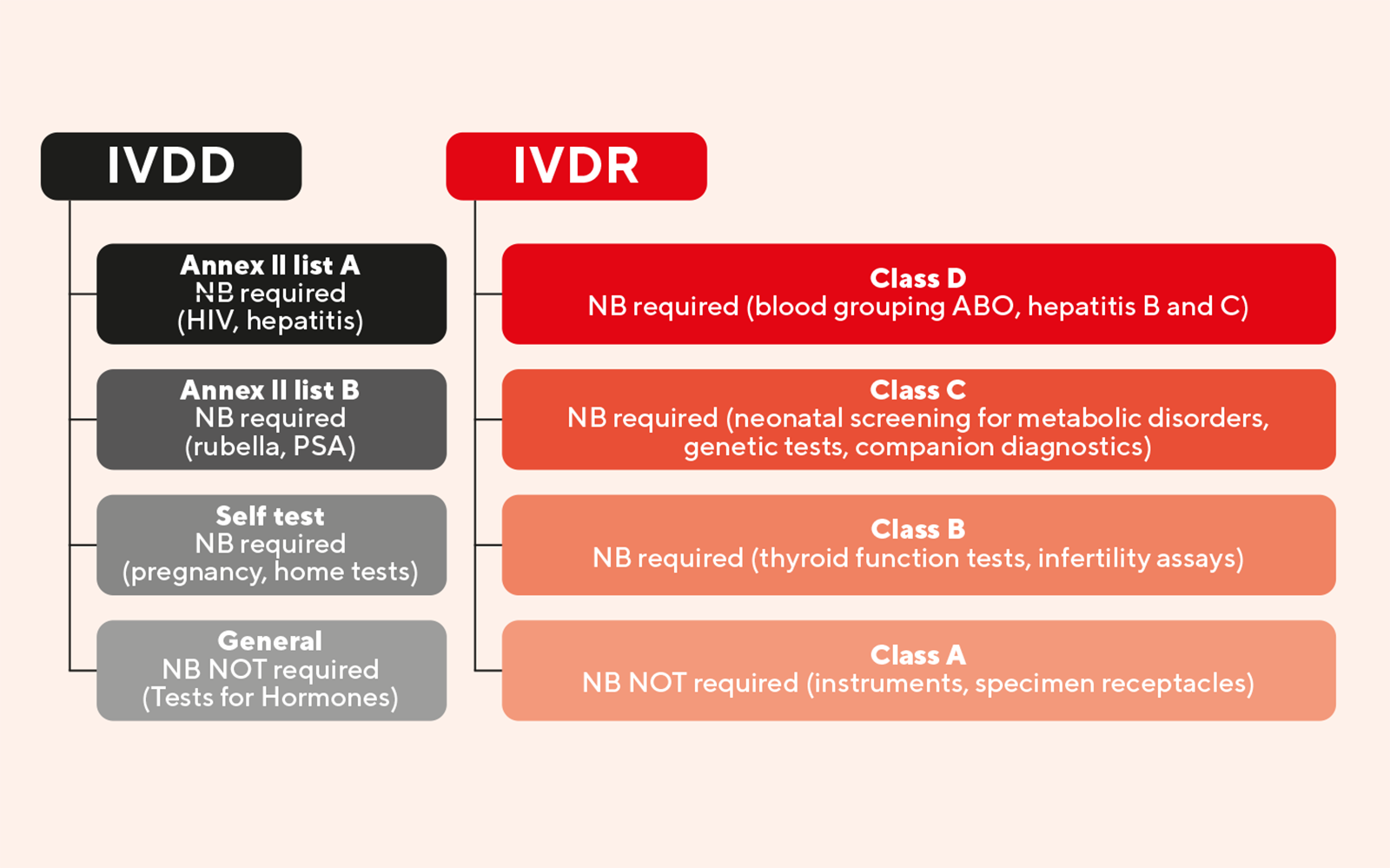Shimadzu is streamlining compliance with the new EU In Vitro Diagnostic Regulation (IVDR).

The introduction of the new IVDR Regulation (IVDR (EU) 2017/746) in May 2017 marked a significant shift in EU regulatory standards. Designed to uphold safety and health standards while fostering innovation, this regulation came into effect on in May 2022, replacing the IVD Directive (98/79/EC). Its scope encompasses a wide range of in vitro diagnostic devices, including reagents, calibrators, kits, instruments, and software intended for diagnostic purposes.
While retaining aspects like CE marking and safety requirements, IVDR introduces changes, notably a risk-based classification system, categorising devices into four categories based on risk level, ranging from class A (low risk) to class D (highest risk).
Unlike the previous directive, which often permitted self-declaration of conformity for lower-risk devices, IVDR mandates certification from accredited Notified Bodies for the majority of devices, while still allowing self-declaration for low-risk Class A devices, thus highlighting a departure from IVDD’s requirements where Class B and above necessitate audits by third-party notified bodies. This significantly increases the reliance on third-party assessment across device classifications.
IVDR also regulates “in-house devices,” also known as lab-developed tests (LDTs) within EU health institutions. While subject to certain exemptions, in-house devices must still meet specified conditions outlined in IVDR Article 5(5), with guidance provided by the Medical Device Coordination Group (MDCG).
Existing IVD Directive products, referred to as “old” devices, can still be used if placed on the market before May 26, 2022, although subject to IVDR provisions on surveillance and incident reporting.
In the UK, under the MHRA authority, the Medical Devices Regulations 2002 were established for medical devices, including IVD products. In July of last year, the Medical Devices (Amendment) (Great Britain) Regulations 2023 took effect, allowing CE marked products in
the UK. Until 30 June 2030, only IVDD compliant products or those complying with the IVDR (Regulation (EU) 2017/746), which is required for CE marking in the EU, will be accepted in the UK.
To assist laboratories in navigating these regulatory changes and simplifying compliance efforts, Shimadzu has developed IVDR Class A solutions for High Performance Liquid Chromatography (HPLC) and Liquid Chromatography Tandem Mass Spectrometry (LC-MS/MS). These solutions, such as the LC-40 CL and LCMS-8045/8050/8060/8060NX CL, are designed to meet the stringent requirements of IVDR while offering flexibility and ease of use.
In particular, Shimadzu’s CLAM-2040 CL, an IVDR Class A compliant fully automated sample preparation module for LC-MS/MS, streamlines the workflow from sample pre-treatment to analysis. This modular system integrates seamlessly with Laboratory Information Systems (LIS) and Laboratory Automation Systems (LAS), enhancing efficiency and enabling a wide range of tests.
One notable application of Shimadzu’s IVDR-compliant solutions is in therapeutic drug monitoring of antifungals and other drugs. By combining HPLC and LC-MS/MS with CLAM-2040 and dedicated IVD kits, laboratories can optimise their resources and achieve reliable data. These solutions offer a ready-to-use turnkey approach.
In conclusion, Shimadzu’s IVDR Class A solutions provide clinical laboratories with the tools they need to meet the challenges posed by the new regulatory landscape. By offering reliable, automated analytical solutions, Shimadzu, a member of the British In Vitro Diagnostic Association, aims to support laboratories in delivering accurate and timely diagnostic services while ensuring compliance with IVDR requirements.
For more information click here
